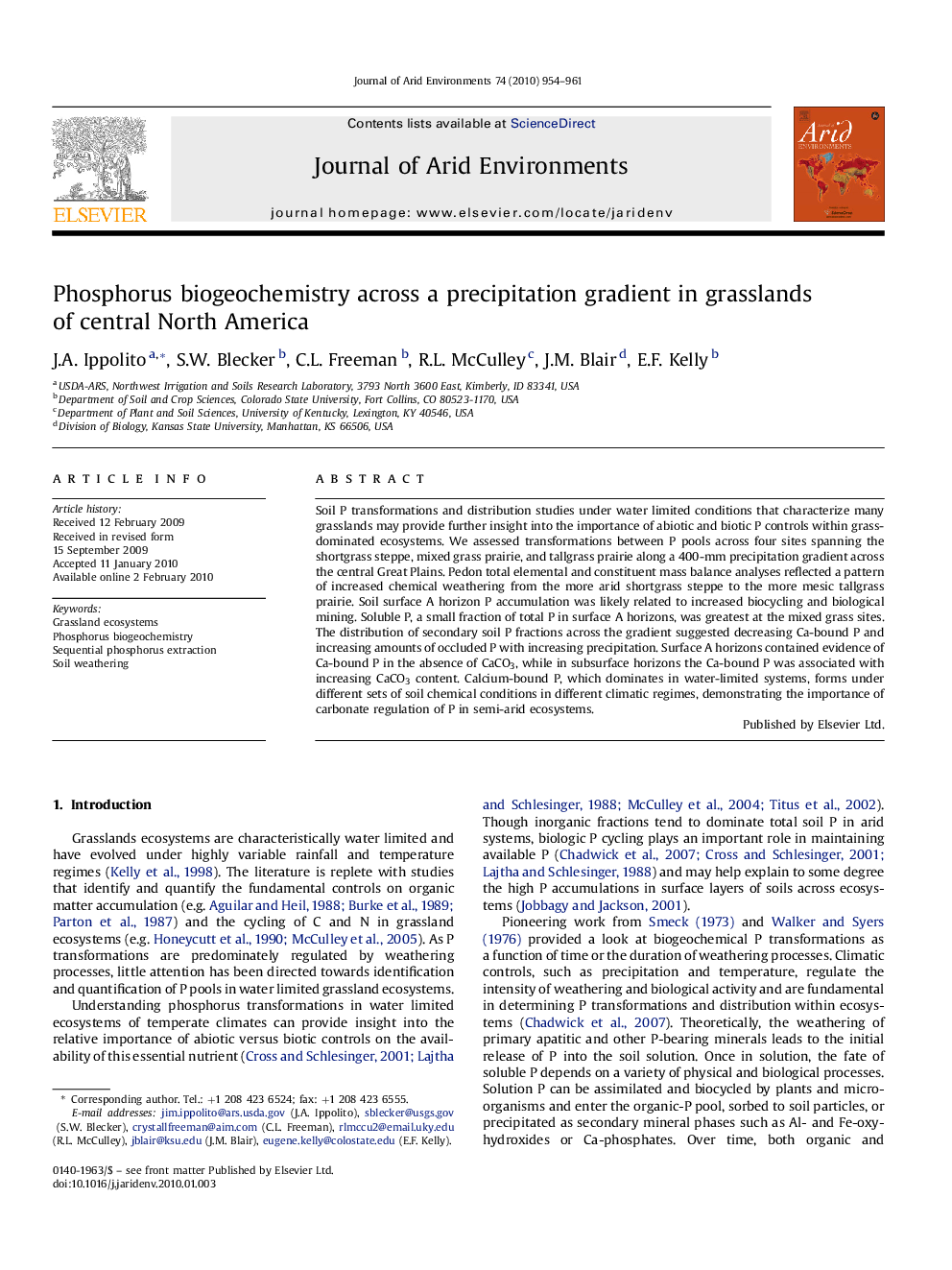| Article ID | Journal | Published Year | Pages | File Type |
|---|---|---|---|---|
| 4394030 | Journal of Arid Environments | 2010 | 8 Pages |
Abstract
Soil P transformations and distribution studies under water limited conditions that characterize many grasslands may provide further insight into the importance of abiotic and biotic P controls within grass-dominated ecosystems. We assessed transformations between P pools across four sites spanning the shortgrass steppe, mixed grass prairie, and tallgrass prairie along a 400-mm precipitation gradient across the central Great Plains. Pedon total elemental and constituent mass balance analyses reflected a pattern of increased chemical weathering from the more arid shortgrass steppe to the more mesic tallgrass prairie. Soil surface A horizon P accumulation was likely related to increased biocycling and biological mining. Soluble P, a small fraction of total P in surface A horizons, was greatest at the mixed grass sites. The distribution of secondary soil P fractions across the gradient suggested decreasing Ca-bound P and increasing amounts of occluded P with increasing precipitation. Surface A horizons contained evidence of Ca-bound P in the absence of CaCO3, while in subsurface horizons the Ca-bound P was associated with increasing CaCO3 content. Calcium-bound P, which dominates in water-limited systems, forms under different sets of soil chemical conditions in different climatic regimes, demonstrating the importance of carbonate regulation of P in semi-arid ecosystems.
Related Topics
Physical Sciences and Engineering
Earth and Planetary Sciences
Earth-Surface Processes
Authors
J.A. Ippolito, S.W. Blecker, C.L. Freeman, R.L. McCulley, J.M. Blair, E.F. Kelly,
